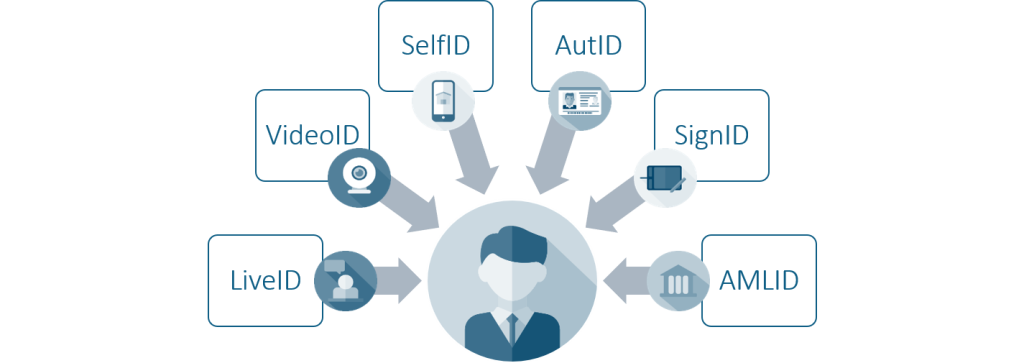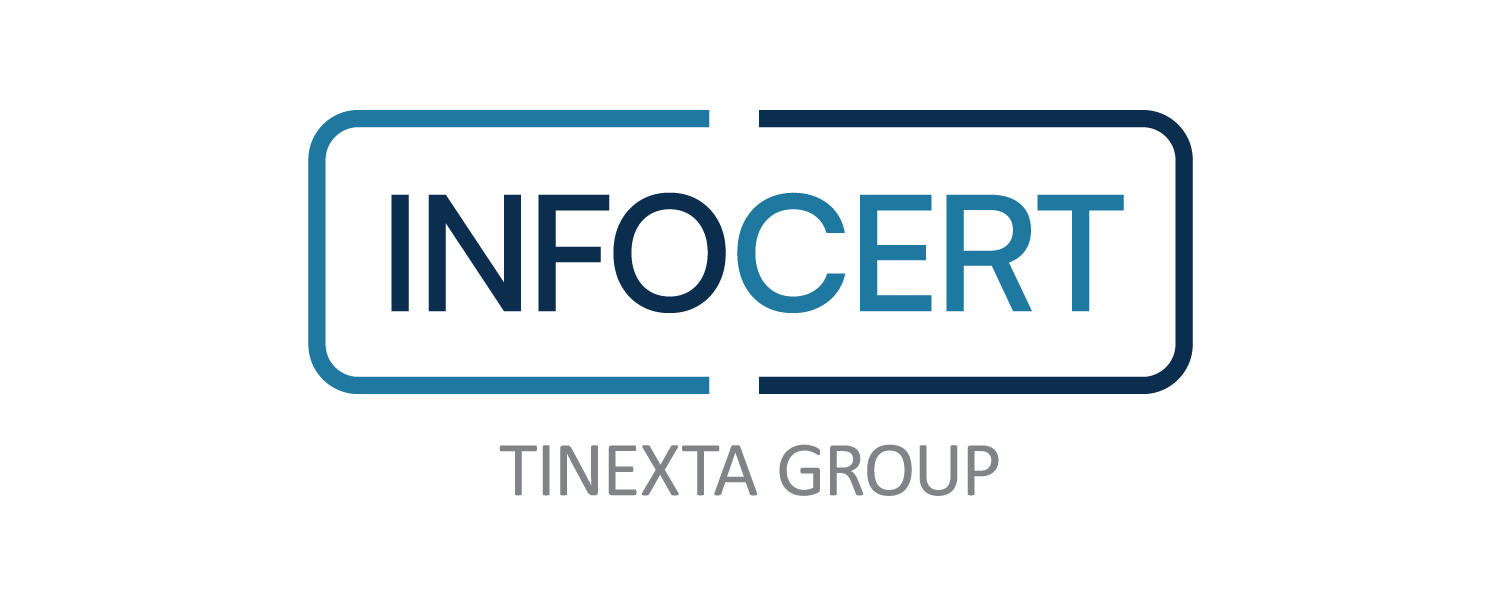Digital Onboarding
TOP – Digital Onboarding
TOP (Trusted Onboarding Platform) is the patented solution for digital onboarding with customer identification and electronic signature at different trust levels and on all devices (desktop, tablet and smartphone). The modular TOP solution offers customers a significantly faster digital onboarding process, higher conversion rates and sales through individual customization and guarantees compliance.
Select suitable modules for the digital onboarding process
TOP is a modular solution consisting of several modules. These can be individually configured according to your requirements. You decide which modules you need. For example, you can identify your customers by using an identification method of your choice and then have a document digitally signed and the document digitally archived in a legally secure and verifiable manner.
Digital identification
You decide which method you want to use to identify customers. Choose the most suitable identification method for your application from the numerous available.
Digital signature
You decide which signature level you need. Thanks to the flexibility of TOP, you can choose between the different signature levels depending on the intended use.
Long time preservation
Digitization in onboarding does not stop at identification and signature. With TOP, you have the option of archiving your documents in a legally secure manner for the long term, thus also saving mountains of paper and storage space.
Identification method as you need it
Decide which procedure you want to use to identify your customers.
With TOP, you can choose from seven different identification methods:


LiveID
This procedure is suitable for on-site identification, for example in a branch. Trained personnel check the identity of a person on the basis of the ID card, and we provide the appropriate software for this, e.g. with AUTHADA onsite.
VideoID
Ein Videoagent verifiziert hierbei die Identität Ihrer Kundinnen und Kunden während eines Videoanrufs. Ein gültiger Lichtbildausweis ist dabei eine Voraussetzung.
SelfID
With SelfID, the person who needs to be identified is digitally identified by an employee in real time. Automatic document data capture (OCR) technology can be used to reduce data entry time.
AuthID
When using AutID, the identification is based on a government-approved identification procedure such as AUTHADA ident. Examples of accepted AutID identities are electronic identity documents (electronic ID cards, electronic passports) and digital identities.
SignID
For identification with SignID, the identification of another qualified trust service provider is used. To complete the identification, the user must have a valid electronic signature certificate and sign an application form digitally in the identification process.
AMLID
With AMLID, companies that are regulated by the Anti Money Laundering Act (AMLA) can use existing data for identification purposes if they have already identified the user in a legally compliant manner. This is possible, for example, with the AUTHADA solution onsite.
EmployeeID
With EmployeeID, existing employee data (e.g. from the personnel database) can be used to create a qualified electronic signature certificate. A new identification is not necessary. Certificates created by this method can only be used for signature processes in the corporate context.
Easier than ever: Digital onboarding with TOP
TOP guarantees you the highest level of security. Thanks to the innovative technology, you can simultaneously increase your revenue and efficiency while saving costs.
Increase in revenue
- New markets and potential customers
- New & innovative offer
- Acceleration of the business transaction
Efficiency & cost saving
- No physical resources required
- Completely paperless process
- Extensive geographic coverage
- Online customer capture
High security
- Standardized approval procedures
- Digital control of transactions
- High evidential value
Regulatory requirements
At AUTHADA we guarantee the highest level of security and protection for your customers’ data. AUTHADA’s solutions are compatible with numerous regulations and laws and in some cases exceed the legal requirements for security and data protection.
German Money Laundering Act (GwG)
An GwG-compliant identification can be implemented with the help of electronic proof of identity (Section 18 of the German Identity Card Act) and the electronic residence permit (Section 78 (5) of the German Residence Act), in accordance with Section 12 (1) sentence 1 No. 2 GwG. The obligations to preserve records resulting from this identification procedure (as per Section 8 (2) sentence 5) require the “service and card-specific marking”, which we provide with the data for identification.
German Telecommunications Act (TKG)
The electronic proof of identity (eID), the residence permit and the eID card for Union citizens are permissible procedures for the identification of natural persons (e.g. for the activation of SIM cards) according to Section 111 TKG. The retention obligations are analogous to Section 8 (2) sentence 5 GwG. Accordingly, TKG-compliant identifications can be carried out with AUTHADA ident and onsite, for example, when concluding a mobile phone contract or in the branch when purchasing a SIM card.
German Identity Card Act (PAuswG)
According to Section 18 and Section 18a of the PAuswG (Section 78 (5) of the AufenthG for residence permits and Section 12 of the eIDKG for eID cards for Union citizens), reading the electronic proof of identity (eID) is a reliable process for reading ID card data online and on site. Before the data is read out, it is verified whether the person presenting the eID card is the cardholder. Before the data is read out, it is checked whether the person presenting the ID document is also the cardholder. In the case of on-site reading, this is done by a employee on site; in the case of online identification, it is done with the help of the personal ID PIN.
eIDAS Regulation
The eIDAS Regulation regulates electronic identification and electronic trust services all over Europe. The German eID has already been successfully notified and will be able to be used for identification in the EU in the future. The implementation of the eIDAS Regulation is outlined in the Trust Service Act (VDG). Moreover, as per eIDAS, a remote signature can be initiated via the German eID.

